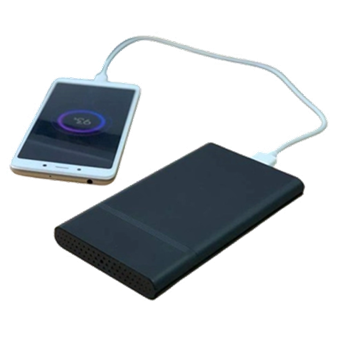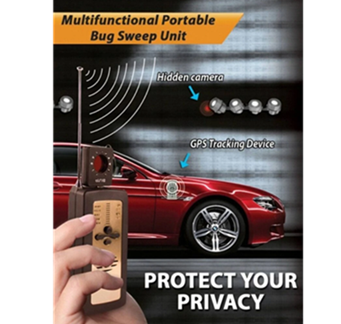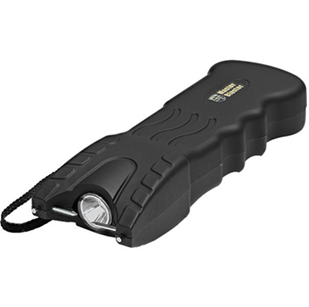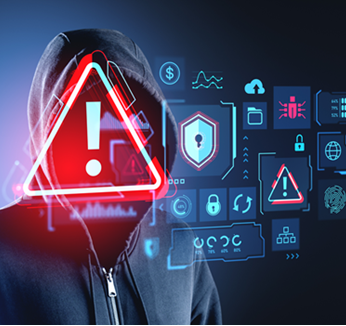What to Do If There Is a Cyber Attack Against Your Home Network
 In today's digital age, your home network is just as valuable as your physical property. A cyber attack on your home network can compromise your personal information, financial data, and even your connected devices. Whether it's malware, ransomware, phishing, or unauthorized access, knowing how to respond quickly and effectively can mitigate damage and prevent future attacks. This guide will walk you through the steps to take if you suspect your home network is under attack and how to protect yourself from future threats.
In today's digital age, your home network is just as valuable as your physical property. A cyber attack on your home network can compromise your personal information, financial data, and even your connected devices. Whether it's malware, ransomware, phishing, or unauthorized access, knowing how to respond quickly and effectively can mitigate damage and prevent future attacks. This guide will walk you through the steps to take if you suspect your home network is under attack and how to protect yourself from future threats.
Recognizing the Signs of a Cyber Attack
Before taking action, you need to determine whether your home network has been compromised. Here are some common signs:
-
Unusual Network Activity: If your internet slows down significantly without explanation, it could indicate unauthorized users consuming bandwidth.
-
Unrecognized Devices on Your Network: Check your router’s admin panel to see if there are any unknown devices connected.
-
Unauthorized Transactions: If you notice unfamiliar financial transactions, your network or devices might be compromised.
-
Pop-ups and Redirects: If your devices start displaying unexpected pop-ups or redirecting to unfamiliar websites, malware may be present.
-
Locked Files or Ransom Messages: If files suddenly become inaccessible and you receive a ransom demand, your system has likely been hit by ransomware.
-
Passwords Stop Working: If you suddenly can’t log in to accounts that should be accessible, someone may have hijacked them.
Immediate Steps to Take During a Cyber Attack
1. Disconnect from the Internet
The first step in containing the attack is to disconnect your devices from the internet. This prevents malware from spreading further and stops hackers from accessing your data in real-time.
-
Unplug your modem and router.
-
Disable Wi-Fi on all devices.
-
Disconnect Ethernet cables from computers.
2. Identify the Affected Devices
Determine which devices have been compromised. Check all computers, smartphones, tablets, smart home devices, and any other connected gadgets for signs of unusual activity.
3. Change Your Wi-Fi and Router Credentials
If your router is compromised, hackers can control network traffic and monitor your online activity.
-
Perform a factory reset on your router.
-
Log in to the router’s admin panel using the default IP address (typically 192.168.1.1 or 192.168.0.1).
-
Change the admin username and password to something strong and unique.
-
Set a strong Wi-Fi password and enable WPA3 (or WPA2 if WPA3 is unavailable).
4. Scan and Remove Malware
Run antivirus and anti-malware scans on all affected devices. Use reputable tools such as:
-
Windows Defender (for Windows users)
-
Malwarebytes
-
Norton Security
-
Bitdefender
If malware is detected, follow the software’s recommendations for removal. In some cases, you may need to boot into Safe Mode to remove persistent infections.
5. Check for Unauthorized Access to Accounts
Log into your online accounts (banking, email, social media) from a secure, uncompromised device. Look for suspicious activity and take action if necessary:
-
Change passwords immediately.
-
Enable two-factor authentication (2FA) where possible.
-
Review login history for any unauthorized access.
6. Update All Software and Firmware
Cyber attacks often exploit outdated software vulnerabilities. Ensure all devices, including computers, smartphones, routers, and smart home devices, are running the latest updates.
-
Update your operating system (Windows, macOS, Linux).
-
Update antivirus and security software.
-
Update router firmware through the manufacturer’s website.
-
Update all apps and browser extensions.
7. Reset Compromised Devices if Necessary
If a device is severely compromised and cannot be cleaned, consider performing a factory reset to eliminate malware and unauthorized access. Backup important files before doing this, ensuring they are not infected.
Securing Your Home Network After an Attack
1. Set Up a Guest Network
Keep smart home devices, IoT gadgets, and guests on a separate network from your primary devices to reduce risks. Most modern routers allow you to create a secondary guest network with limited access.
2. Strengthen Your Router’s Security
-
Disable remote management features to prevent external access.
-
Turn off WPS (Wi-Fi Protected Setup), which is vulnerable to attacks.
-
Use a strong, unique admin password for your router.
3. Monitor Your Network Regularly
Use router logs and network monitoring tools like Fing or GlassWire to detect unusual activity. Periodically check for unknown devices on your network.
4. Educate Family Members on Cybersecurity
Ensure everyone in your household understands basic security practices:
-
Avoid clicking on suspicious links or attachments.
-
Use strong, unique passwords for each account.
-
Recognize phishing scams and social engineering tactics.
5. Back Up Data Regularly
Regularly back up your files to an external hard drive or secure cloud service. This protects against ransomware and data loss.
When to Seek Professional Help
If your efforts to contain the cyber attack are unsuccessful, consider seeking help from cybersecurity professionals. Contact:
-
Your internet service provider (ISP) for assistance.
-
A cybersecurity consultant if you suspect a sophisticated attack.
-
Law enforcement (such as the FBI’s Internet Crime Complaint Center) if financial fraud or identity theft occurs.
Conclusion
Cyber attacks against home networks are becoming increasingly common, but with the right knowledge and proactive security measures, you can protect your digital life. By taking immediate action during an attack and strengthening your defenses afterward, you can safeguard your personal information and maintain a secure home network. Stay vigilant, update your security practices regularly, and educate your household to ensure long-term protection against cyber threats.
Company Info
Customer Service
Product Information
- TASER® and Stun Devices Regulations by State
- TASER® Safe Escape Product Replacement Guarantee
- TASER® Comparison Chart
- TASER® User Manuals
- TASER® Warranty Info
- Byrna Product Catalog
- PepperBall Manuals & Spec Sheets
- Pepper Spray Laws
- Air Gun Laws
- States that Restrict Automatic and Butterfly Knives
- Our Print Catalog



































































